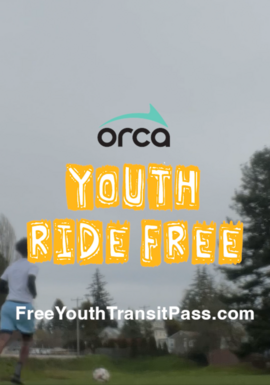 bronze
bronze

C+C
When Washington became the first state to make trains, buses, and other transit free for kids 18 and younger, Seattle’s transit agency, King County Metro, rolled out a quick-turn ad campaign in-house. For the agency’s “Phase II ad” campaign, they brought on C+C to develop creative that would be relevant and relatable to local teens. C+C proposed creating two videos from a teen point-of-view with a “day in the life” approach, filmed vertically and produced to look like content a teen might post online. The videos would emphasize the themes of freedom and independence this audience craves, and focus on destinations teens want to go.
A teen focus group shared: 1) they wanted to hear from peers and not to be “told what to do” by adults/government, 2) themes of freedom and independence resonated, and 3) school, work, sports, and friends were top destinations.
Key objectives:
Spread awareness: Drive 10 million impressions overall and 2.5 million completed video views.
Drive engagement: Garner 200,000 video engagements.
Drive web traffic: Send youth and parents to FreeYouthTransitPass.com to learn more, driving an average 582 daily web visits during the campaign (2x Phase I average.)
C+C created social-ready videos from the teen point of view, that were a significant departure from Metro's past videos. These were Metro's first vertical video ads, and their first user generated content-style UGC-style videos.
The video campaign surpassed all goals:
- Earned over 22.4 million impressions (224% of goal) and 3.6 million completed video views (144% of goal). Media tactics alone accounted for 88% more impressions than in Phase I, with only 35% more budget.
- POV reels amassed 242,000 engagements on social media (121% of goal), with many people tagging their friends.
- Attracted 990 daily website visits—340% more than in Phase 1 and 700% more than when the campaign was inactive.
The videos would be promoted throughout four counties that encompass 77 cities and towns, eight different transit agencies (each with their own branding), and a mix of urban, suburban, and rural areas. It would be a challenge to ensure the videos would feel relevant to youth and parents in these vastly different environments. This was addressed by shooting the videos in a mix of urban and suburban areas; selecting locations that felt "Northwest-y" but didn’t show specific Seattle landmarks; and shooting transit with careful angles that didn’t show too much of the bus’s (Seattle-specific) colors and branding.
no
No